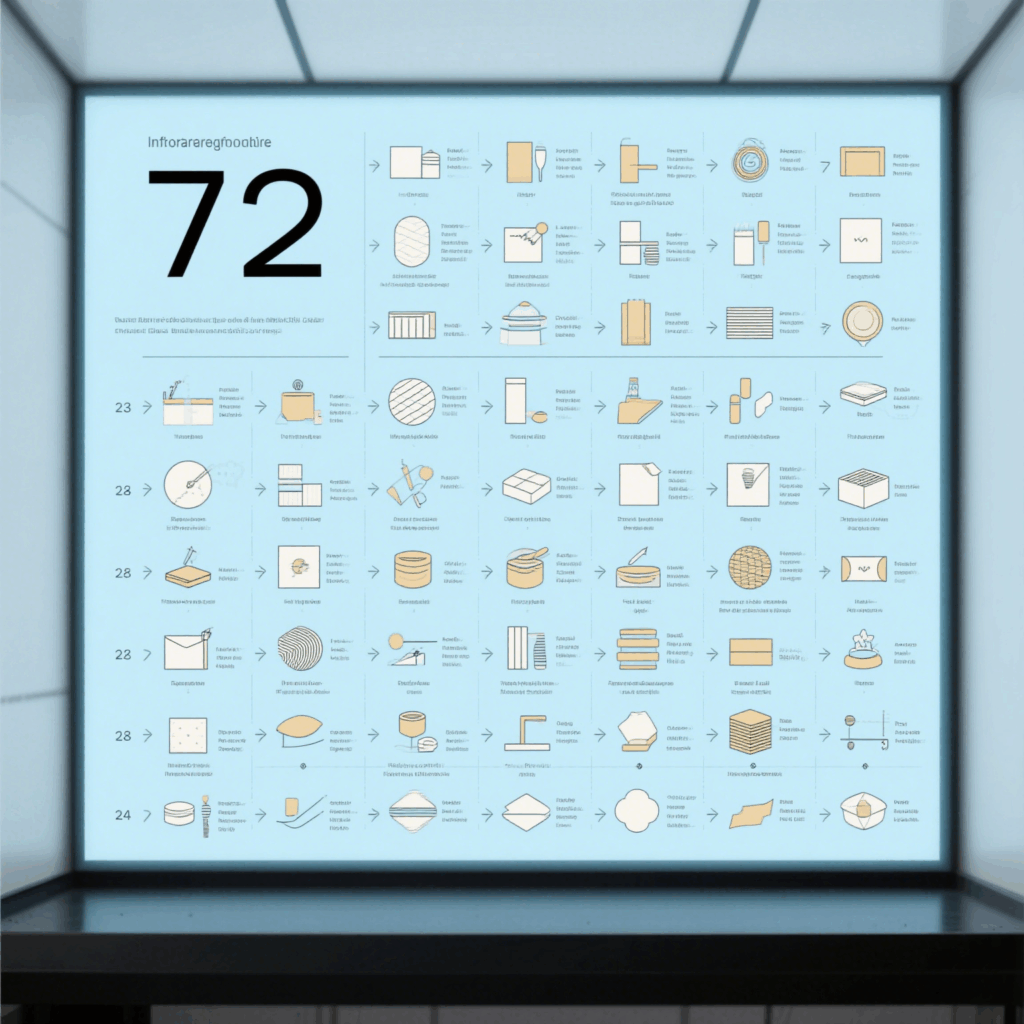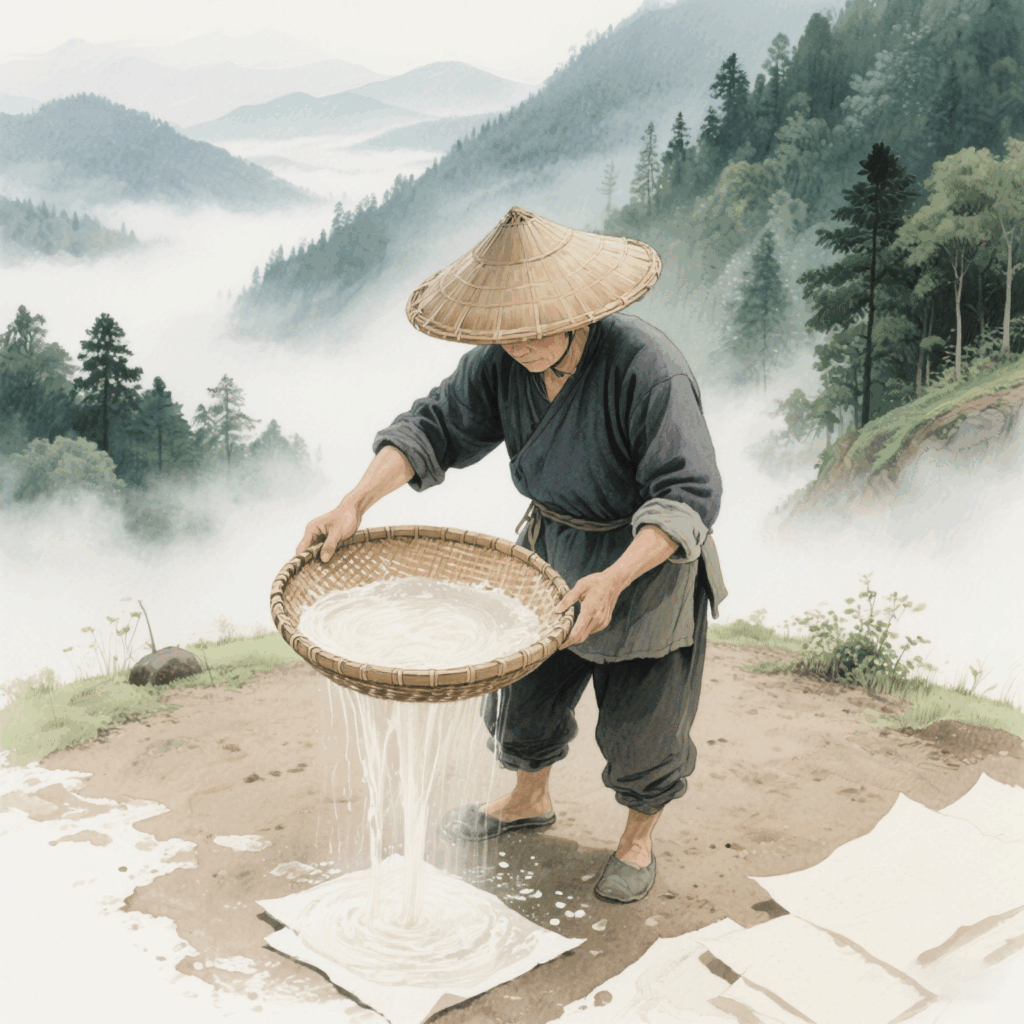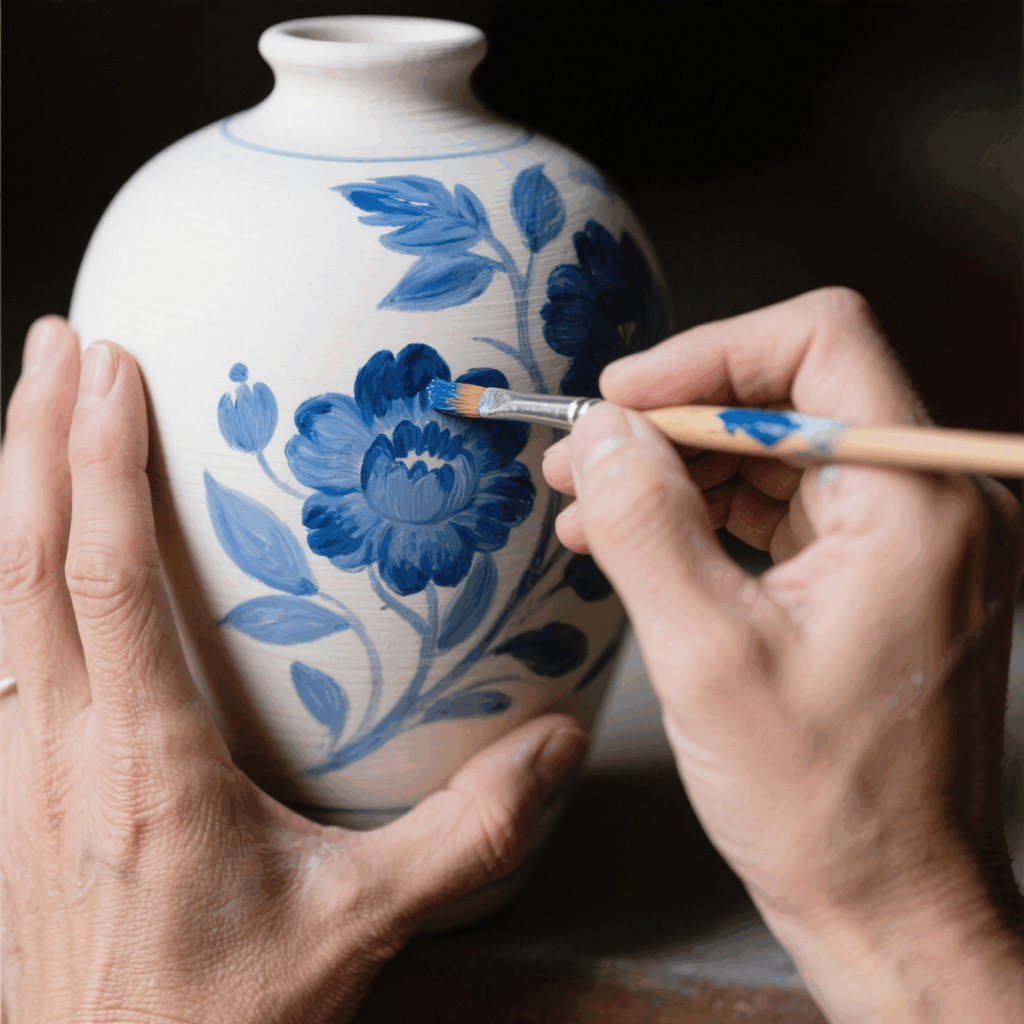The Philosophy of 72: More Than a Number
The number “72” holds mystical weight in traditional crafts. From Guizhou’s bamboo paper to Jingdezhen’s porcelain, artisans describe their work as “72 processes” — not just steps, but a rhythm connecting nature, labor, and time. These rituals encode sustainability, patience, and ancestral wisdom, forming a “cultural DNA” passed through generations146.

Case Study 1: Bamboo Paper’s 72-Step Alchemy
From Bamboo to Artistry
In Panzhou’s bamboo forests, 55-year-old Tang Shirong practices a 72-step papermaking ritual unchanged for centuries1:
- Harvesting: Only young bamboo is cut at dawn to retain dew’s freshness.
- Fermentation: Bamboo strips ferment in lime pits for 3 months, breaking down fibers naturally.
- Pulping: Workers pound softened bamboo into pulp using water-powered trip-hammers.
- Sheet-forming: Pulp is sieved through bamboo screens — a step requiring 20 years’ mastery to ensure uniform thinness.
Tang’s paper, sold globally, embodies sustainability: zero chemicals, solar drying, and bamboo’s rapid regrowth1. “Each step is a dialogue with nature,” he says.

Case Study 2: Jingdezhen Porcelain’s 72 Transformations
Where Clay Becomes Poetry
Jingdezhen’s 72-step porcelain process, documented since the Ming Dynasty, merges geology and artistry4:
- Mining & Refining: Craftsmen “read” mountains to extract瓷石 (porcelain stone), then crush, wash, and age clay for years.
- Glazing Alchemy: Ash from burnt ferns mixes with minerals, creating lustrous釉 (glazes) that react unpredictably in kilns — a “collaboration with fire.”
- Brushstroke Legacy: Blue-and-white vases demand 34 sub-steps alone, from cobalt grinding to freehand painting with wolf-hair brushes.
Modern labs now replicate ancient glazes, but artisans insist: “The kiln’s spirit cannot be digitized”8.

The Hidden Energy in Repetition
Mindfulness as a Survival Tool
Repetitive processes — like pounding pulp or kneading clay — are not mere labor. Neuroscience reveals rhythmic tasks reduce stress (lowering cortisol by 18%7) and activate creative brain networks3. Artisans like silver-smith Wu Shuigen describe 50-year routines as “moving meditation”: hammering 0.2mm silver threads for dragon boats requires “a still mind and flowing hands”3.

Modern Lessons from Ancient Codes
Sustainability & Circular Design
The 72-step ethos thrives in unexpected places:
- Waste-to-Art:黑龙江’s Sun Kaifu upcycles scrap metal into turbine parts, saving $49M and earning the “Alchemist Engineer” title10.
- Slow Tech: Designers like Unfold Studio blend 3D printing with hand-thrown pottery, proving machines can mimic “human touch” randomness8.
- Carbon-Negative Craft: Bamboo papermaking absorbs 12 tons of CO2/hectare yearly — a model for eco-industries110.
Preserving the 72-Step Legacy 69
When Machines Can’t Replace “Soul”
Despite automation, UNESCO warns 50% of traditional crafts risk extinction by 2030. Salt野米松’s interviews with aging Japanese craftsmen reveal three threats:
- Material Loss: Vanishing forests and fisheries disrupt supply chains.
- Skill Transmission: Mastery requires “body memory” — 10,000+ hours of tactile learning.
- Economic Pressures: Fast fashion and plastics undercut handmade value.
Yet hope persists. In贵州, Tang trains youths using TikTok tutorials, while Jingdezhen’s “Porcelain Hackathons” invite coders to reimagine kiln tech18.
